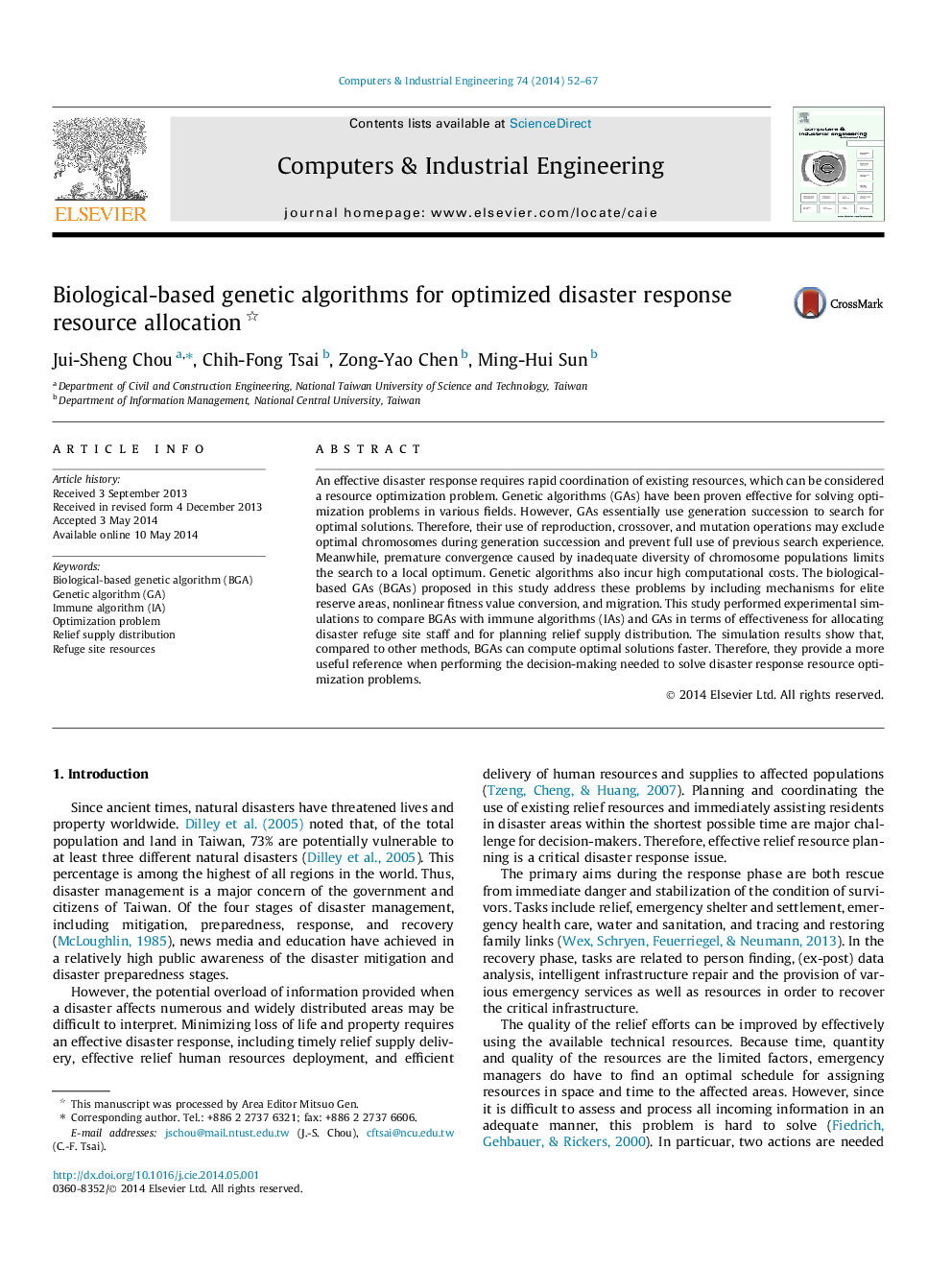| Article ID | Journal | Published Year | Pages | File Type |
|---|---|---|---|---|
| 1133899 | Computers & Industrial Engineering | 2014 | 16 Pages |
•A biological-based generic algorithm for optimizing disaster resources allocation.•A case study of refuge site staff allocation and relief supply distribution plans.•A method of facilitating decision makers in optimizing resource use in disaster response.
An effective disaster response requires rapid coordination of existing resources, which can be considered a resource optimization problem. Genetic algorithms (GAs) have been proven effective for solving optimization problems in various fields. However, GAs essentially use generation succession to search for optimal solutions. Therefore, their use of reproduction, crossover, and mutation operations may exclude optimal chromosomes during generation succession and prevent full use of previous search experience. Meanwhile, premature convergence caused by inadequate diversity of chromosome populations limits the search to a local optimum. Genetic algorithms also incur high computational costs. The biological-based GAs (BGAs) proposed in this study address these problems by including mechanisms for elite reserve areas, nonlinear fitness value conversion, and migration. This study performed experimental simulations to compare BGAs with immune algorithms (IAs) and GAs in terms of effectiveness for allocating disaster refuge site staff and for planning relief supply distribution. The simulation results show that, compared to other methods, BGAs can compute optimal solutions faster. Therefore, they provide a more useful reference when performing the decision-making needed to solve disaster response resource optimization problems.
